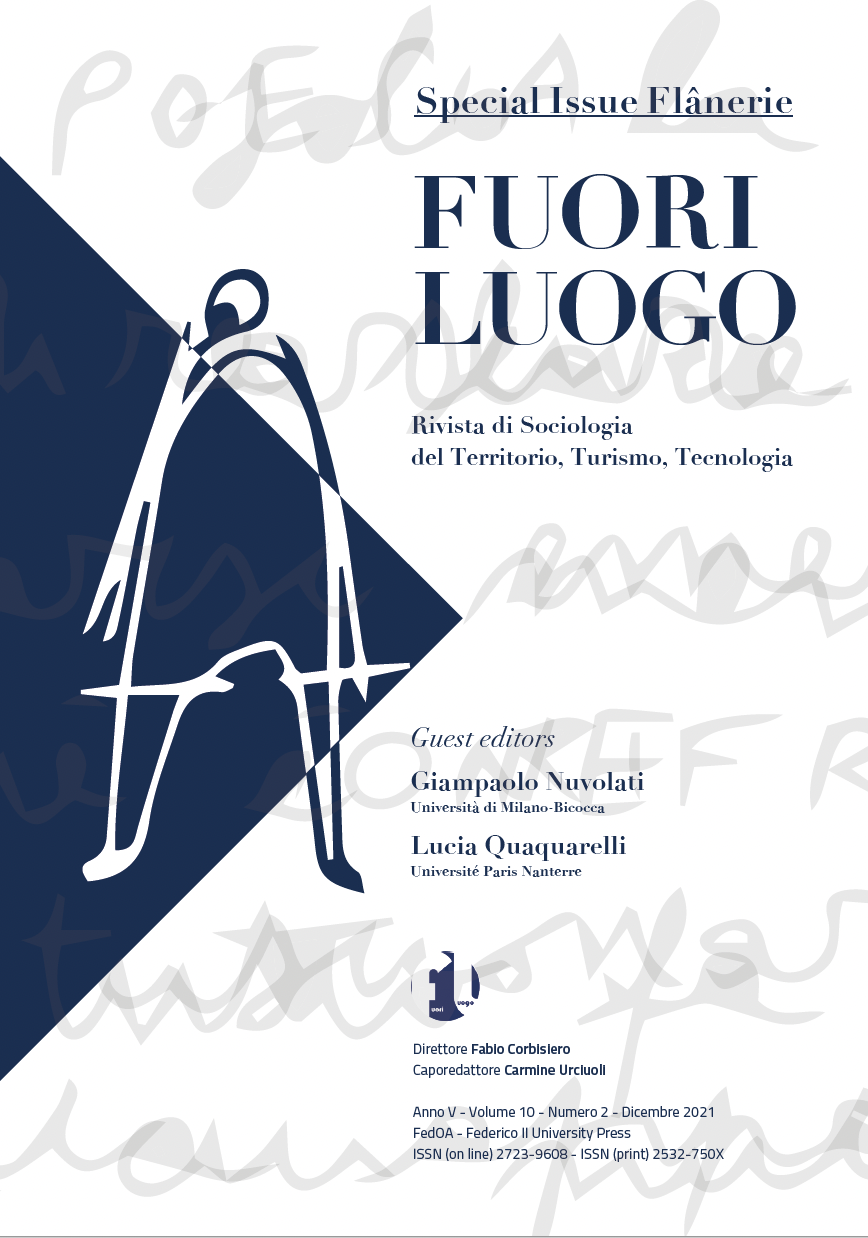Flânerie as a way of living, walking and exploring the city. An introduction
Abstract
This issue brings together a set of contributions by scholars from the humanities and the social sciences who revitalise the figure of the fl neur, and the practice of fl nerie, in order to put them to the test with different objects of study, in the light of different methodological and scientific horizons. The notion of flâneur – employed since the late nineteenth century to designate poets, artists, and intellectuals who critically observed people’s behavior while strolling among the crowds, and codified in the influential work of Walter Benjamin (1999) on the “passages” of Paris – is once again of interest for human and social sciences – as a tool for identifying a specific mode of displacement, mobility and exploration of places, a particular type of reflective and perceptive relationship between people and spaces. Relocated from the Parisian arcades to contemporary urban and suburbs agglomerations and commercial malls, the concept of fl neur seems to reflect the modern sense of bewilderment, as well as the craving for new relationships with both places and their inhabitants.
Downloads
Copyright (c) 2022 Lucia Quaquarelli, Giampaolo Nuvolati

This work is licensed under a Creative Commons Attribution 4.0 International License.




